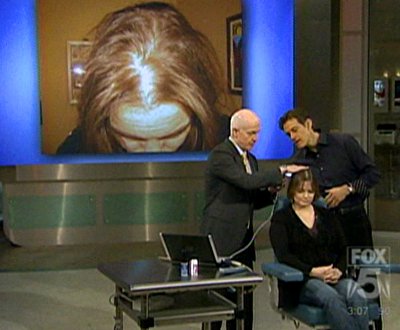Q: Is the hair transplant for women different from the one for men? Anything easier? Anything more difficult?
A: Women’s hairlines are far more complex than men’s as the hair in a women’s hairline often creates subtle swirls and directional changes. These must be mimicked in the surgical design for the hair transplant to look natural.
In women, we are more often working in and around existing hair, as most women that seek hair transplantation are thinning rather than bald. This slows down the graft insertion steps and makes the procedure take a bit longer compared to men.
Read more about hair loss in women or see before/after photos in our Women’s Hair Transplant Gallery.





 Dr. Bernstein was interviewed on the Howard Stern Show for a Howard 100 News Brief about hair transplantation.
Dr. Bernstein was interviewed on the Howard Stern Show for a Howard 100 News Brief about hair transplantation. The American consumer’s best source for finding top medical specialists — Castle Connolly’s America’s Top Doctors — recently published its 8th Edition.
The American consumer’s best source for finding top medical specialists — Castle Connolly’s America’s Top Doctors — recently published its 8th Edition. 


